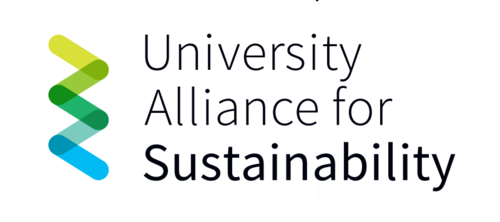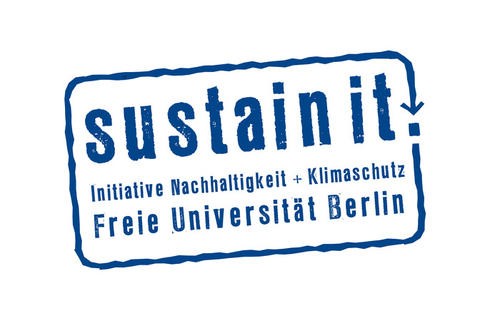Panel Discussion
The Biodiversity Workshop 2025 brought together experts and students from Una Europa partner universities to discuss key topics in biodiversity monitoring and what universities can achieve in this area together with society.In the following you can find general information about the lecture and below a short documentation of the discussion. The video link to the recordings of the evening follows soon.
When: Thursday, February 20, 2025, 6:30 PM (CET)
Where: Freie Universität Berlin, Campus Dahlem, Elisabeth-Schiemann-Hörsaal, Königin-Luise-Str. 12-16
What: Una Europa Lecture: Biodiversity monitoring - campuses as citizen science projects
Speakers:
- Prof. Dr. Aletta Bonn, Berlin’s State Commissioner for Nature Conservation and Landscape Management
- Prof. Dr. José Aguirre, Representatives of the Biodiversity Monitoring Group UCM Madrid
- Vivien Lovette, Bachelor’s student at Freie Universität Berlin and contributor to the Blühender Campus project
Documentation of the discussion (text from: Thea, Jule, Brit):
The plenary discussion about Biodiversity monitoring in the evening was public and recorded as an Una Europa lecture. The event started off with introductory words by the dean of studies Prof. Dr. Beate Paulus, and a presentation held by Prof. Dr. José Antonio Molina and Prof. Dr. José Aguirre covering previous and current biodiversity monitoring projects of the University of Madrid (UCM). Following this, Dr. Vanessa Zacher introduced the panel’s speakers and gave the impulse with key questions to start the discussion round. The panel’s speakers were Prof. Dr. Aletta Bonn, Berlin’s State Commissioner for Nature Conservation and Landscape Management, Prof. Dr. José Aguirre and Prof. Dr. José Antonio Molina, scientists at Universidad Complutense de Madrid and part of the Biodiversity Monitoring Group, and Vivien Lovette, a student at Freie Universität Berlin and collaborator of the Blooming Campus initiative.
Several key questions were discussed, for instance about positive outcomes already achieved in past or ongoing monitoring projects as well as general benefits for campus life and society. Further, it was discussed how biodiversity monitoring can be integrated into education, how different projects across Europe can be connected both scientifically and in terms of university politics, how tools like identification apps can effectively be used to generate data, and lastly, personal and moving experiences in relation to monitoring.
Vivien Lovette shared her recent experience about the butterfly monitoring on campus she did for her Bachelor’s thesis and butterfly walks with interested citizens she was involved in. For her, the link between theoretical knowledge and the practical application creates a whole new level of understanding which she would like to share. Some benefits of a collaborative monitoring approach could be to create a more robust and reliable data pool and possibly to gain understanding about migration or adaptation patterns. While she has mixed feelings about the use of apps for identification since they potentially could be a distraction, they could be helpful for beginners, and she emphasized that one can learn identifying butterflies surprisingly quickly with consistency and time spent doing it. Her most precious memory was to find rare species, the friends she gained, and the support she received from everyone involved.
Prof. Dr. Aletta Bonn similarly believes that doing science together in form of collaborative projects or even citizen science is something very powerful, since it promotes learning from one another, and should be encouraged. Further, the results of monitoring projects of comparative habitats have been able to change things for the better, for instance in Leipzig where parks are now redesigned to promote biodiversity. She welcomes the use of identification apps since they break down barriers of learning species identification and make self-learning much easier which is helpful for citizen science as well. For her, the glow in the eyes of students when they learn new things and start to identify as real scientists, make the work worthwhile.
Prof. Dr. José Aguirre believes in the necessity of working together and that collaborative monitoring projects are valuable because they provide evaluation tools, give students a way to do actual science, and show that campuses are living labs. He argued that “it’s hard to love what you don’t know”, therefore learning more about species will help people understand why biodiversity is worth preserving. For him, identification apps are very useful for learning and every small monitoring project can have an important impact. His favourite moments are the ones where younger students are teaching older ones, emphasizing the importance of learning from each other.
Prof. Dr. José Antonio Molina believes that a healthy biodiversity means healthy human beings, and that this connection can be a driver to use monitoring for preservation efforts. He pointed out that learning is a process, and genuine observation is necessary for it but agrees that identification apps are a useful tool, citing a publication where the error rate of such apps is evaluated and their good performance emphasized. He believes that scientists should lead by example and that networking is important in science.
Following the initial discussion, there was a session with questions asked by the audience. This offered valuable and inspiring insights into monitoring work from a personal perspective, extending beyond purely scientific results.
The day wrapped up with catering and refreshments in the foyer, alongside a student poster session showcasing biodiversity projects from Una Europa campuses.




